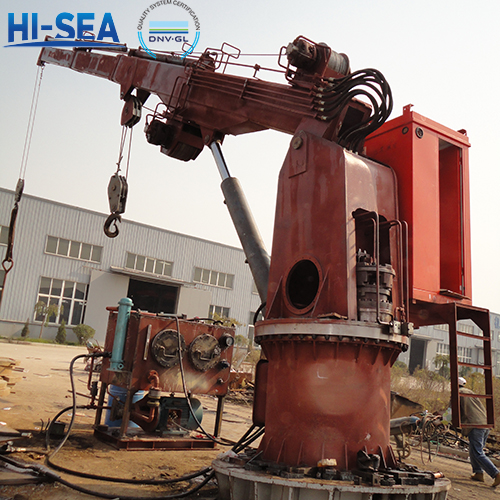
Common fault types of hydraulic crane
Classify the common faults of hydraulic cranes, mainly including the following categories of faults. (1) The moving parts of hydraulic motors and pumps are severely worn. Fault phenomenon: In the early stage of the fault, the lifting capacity gradually decreases, the control oil pressure is low, and the oil temperature is high. In the later stage, due to excessive leakage in the main oil circuit, the system oil pressure was too low, causing the hydraulic crane to not function properly. (2) The hydraulic pipeline is severely damaged. Fault phenomenon: Due to hydraulic system impact, excessive vibration, and poor management, hydraulic pipelines suddenly rupture during operation, causing a large amount of hydraulic oil waste and environmental pollution. ......
Overview
Classify the common faults of hydraulic cranes, mainly including the following categories of faults.
(1) The moving parts of hydraulic motors and pumps are severely worn. Fault phenomenon: In the early stage of the fault, the lifting capacity gradually decreases, the control oil pressure is low, and the oil temperature is high. In the later stage, due to excessive leakage in the main oil circuit, the system oil pressure was too low, causing the hydraulic crane to not function properly.
(2) The hydraulic pipeline is severely damaged. Fault phenomenon: Due to hydraulic system impact, excessive vibration, and poor management, hydraulic pipelines suddenly rupture during operation, causing a large amount of hydraulic oil waste and environmental pollution.
(3) The hydraulic crane is not working properly. Fault phenomenon: The hydraulic system has excessive impact and vibration, and there is a significant adjustment error between the control system, hydraulic pump zero position, and brake.
(4) The hydraulic control valve is not sensitive to action. Fault phenomenon: The hydraulic system has impact and vibration, the lifting action is not sensitive, and the brake action is abnormal.
(5) Accumulator failure. Fault phenomenon: When the crane is not working, the control oil pressure is normal; When the joystick is pushed away from the zero position, the control oil pressure will suddenly drop significantly, causing the low-voltage protection relay to act and stop.
(6) The filter element of the oil filter is broken, the filter shell is broken, and the bypass valve of the oil filter is in an open state. Fault phenomenon: Severe hydraulic oil pollution, wear of moving parts and stuck control valves in the system, and a large amount of wear and tear at the bottom of the oil tank.
(7) Hydraulic oil cooler failure. Fault phenomenon: The crane operates normally, and the system oil temperature abnormally rises. There is no obvious temperature difference between the inlet and the outlet of the cooler. After a certain period of normal operation, the crane stops due to the action of the high-temperature protection relay.
(8) System oil temperature is too high, fault phenomenon: there is no obvious temperature difference at the inlet of the cooler, and the fan is damaged; There is excessive leakage within the system, and the surface temperature of some hydraulic components is very high, resulting in a significant decrease in the speed of the hydraulic motor.
For more marine crane information, kindly please click here.





